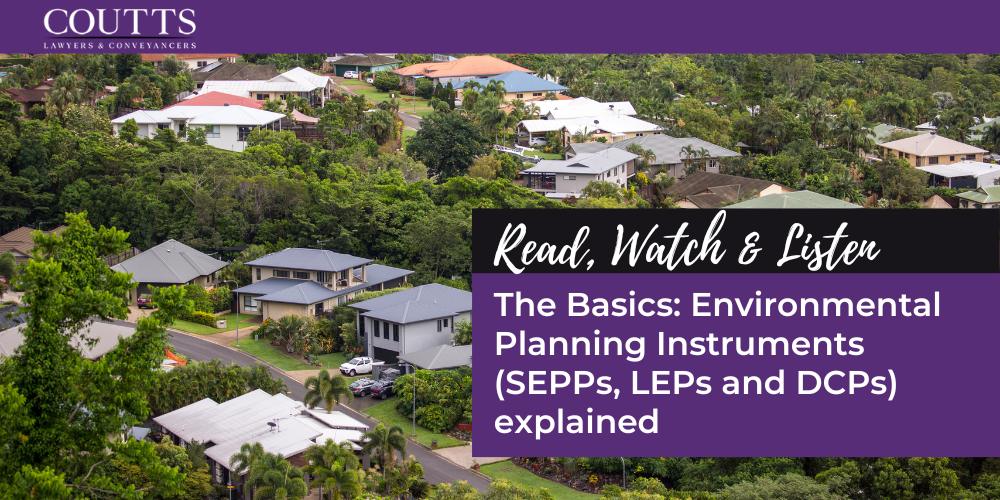KEY TAKE-OUTS
- Whilst working from home we are exposed to a whole new variety of disruptions; these include noisy neighbours. But how do you address these issues?
- Firstly, raise your concerns with your neighbour in a pleasant manner;
- Secondly, proceed to mediation;
- Thirdly, reconsider your options, using a legal cost-benefit analysis mindset; and
- Finally, apply for a Noise Abatement Order.
During the current pandemic, a huge portion of us have needed to adapt to working from home arrangements. However, since we are spending more time at home than ever, we may be starting to notice and be affected by issues that never bothered us to begin with. Noise is a major instigator of disputes between neighbours. Whether it be a loud party with music blasting into the early hours of the morning, throughout the day, each and every weekend, consistent yelling throughout the days or inconsolable barking from the dog next door, noise disputes arise in an abundance of situations. Commencing an application for a noise abatement order with the Local Court of NSW can be difficult to approach, requires a very high threshold to be met and there are many variables that need to be considered first.
Under the Protection of the Environment Operations Act 1997 (‘the Act’), an occupier of any premises can apply to the Local Court for a noise abatement order where their occupation is affected by offensive noise (s 268).
The Local Court, in assessing the application for a noise abatement order, will consider, on the balance of probabilities:
(a) Whether the alleged offensive noise exists; and
(b) Whether the offensive noise is likely to occur on the same premises.
What is considered to be ‘offensive noise’?
The term ‘offensive noise’ is defined in the Act, extracted below, as noise:
- that, by reason of its level, nature, character or quality, or the time at which it is made, or any other circumstances:
- is harmful to (or likely to be harmful to) a person who is outside the premises from which it is emitted, or
- interferes unreasonably with (or is likely to interfere unreasonably with) the comfort or repose of a person who is outside the premises from which it is emitted, or
- that is of a level, nature, character or quality prescribed by the regulations or that is made at a time, or in other circumstances prescribed by the regulations.
- Raise your concerns with your Neighbour in a pleasant manner
This is the simplest and cost-effective method for dealing with a noise complaint. This part may be overlooked but is by far the most effective way to reach a resolution by making neighbours aware of the impact of their behaviours.
- Mediation: Community Justice Centres
In the event that your neighbours don’t respond in the reasonable manner you had hoped for and the problem continues to persist, you can engage a mediator (being a neutral third party) to assist in resolving the dispute. This gives the neighbours on each side an opportunity to talk with each other and clarify their position on the dispute, and be heard. The mediator then can help the neighbours develop options that may resolve the dispute, that perhaps parties had not yet considered.
As part of any Local Court proceedings, the Court will ordinarily send the parties to a Community Justice Centre for mediation first before proceeding to a hearing.
- Reconsider your options
If you are unsuccessful in mediating the problem, it may be worth reconsidering your position. In our experience, during these neighbourhood disputes, the idealisation of winning and losing sometimes may interfere with the desired outcome. This outcome, in most circumstances, is reducing or eliminating the offensive noise. We like to encourage clients to review all potential options that achieve the desired outcome, maintain positive relationships and at far less of a financial burden than what litigation by way of Noise Abatement Order would achieve. Please refer to our previous blog “A Legal Costs-Benefit Analysis – What is it?” for further clarification.
- Apply for a Noise Order
Process of Applications for a Noise Abatement Order
The process to obtain a noise abatement order is complex and lengthy. Generally speaking, an application to the Court is prepared which provides a description of the disturbance and provides reasons for your application. It is important that this application provides a very detailed description of the offensive noise and the harm it has caused you; as such, the preparation of the application may take some time.
Following the application being filed with the Local Court, it must be served on your neighbour for their records, review and action.
As noted above, the Local Court Registrar is able to make enquiries with you regarding mediation and may order that the parties undertake mediation prior to the Local Court considering this application.
The matter will then be listed for mention, where the parties will attend the Court and set dates for evidence to be produced and a hearing. This application can take months to be considered by the Court.
Effect of noise abatement orders
In the event that you are successful at obtaining a noise abatement order, the Local Court can make the following directions:
- direct your neighbour to abate the offensive noise with a specific time period; and/or
- direct your neighbour to prevent the recurrence of the offensive noise.
In the event that your neighbour fails to comply with such orders, then they may be liable for fines in respect of their noncompliance.
Please note that a noise abatement order is not guaranteed to limit/stop the noise from your noisy neighbours. It is possible that your neighbour will not comply with such an order, although there are penalties for breaching a Court order.
Costs and Compensation
We note that the Local Court does not have jurisdiction to order compensation for pain and suffering in respect of noise abatement orders. The Local Court does however allow for some costs to be recovered by the successful party at the conclusion of the matter. This can mean that, if unsuccessful, you may be ordered to pay your neighbours’ costs and legal fees in respect of the noise abatement order application. It is important to note that it is unlikely that the full costs of the successful party will be recoverable.
Nuisance
In the alternative to a noise abatement order, you may be eligible to apply to the Supreme Court for similar orders for private nuisance. This will require you to show that your neighbour is interfering with the land you reside in, in a way which is substantial and unreasonable and interferes with your enjoyment of the land. In addition, you will also need to show that your neighbour is at fault by proving that your neighbour knew of the nuisance, the damage was reasonably foreseeable by your neighbour and that they did not take steps to prevent the nuisance.
Applying to the Supreme Court for private nuisance is a lengthy and costly exercise. Our success in proving a nuisance claim is also dependent on the evidence we are able to produce. It is important to note, as it is with the Local Court for Noise Abatement Orders and the Supreme Court for private nuisance, that without adequate acoustic evidence and ongoing journaling, which both require time and upfront expenditure, there is little likelihood of success. It is also worth noting that the Supreme Court does have jurisdiction to award compensation for pain and suffering.
For further information please don’t hesitate to contact our Sydney lawyers:
info@couttslegal.com.au
1300 268 887
Contact Coutts Lawyers today.
This blog is merely general and non-specific information on the subject matter and is not and should not be considered or relied on as legal advice. Coutts is not responsible for any cost, expense, loss or liability whatsoever in relation to this blog, including all or any reliance on this blog or use or application of this blog by you.



